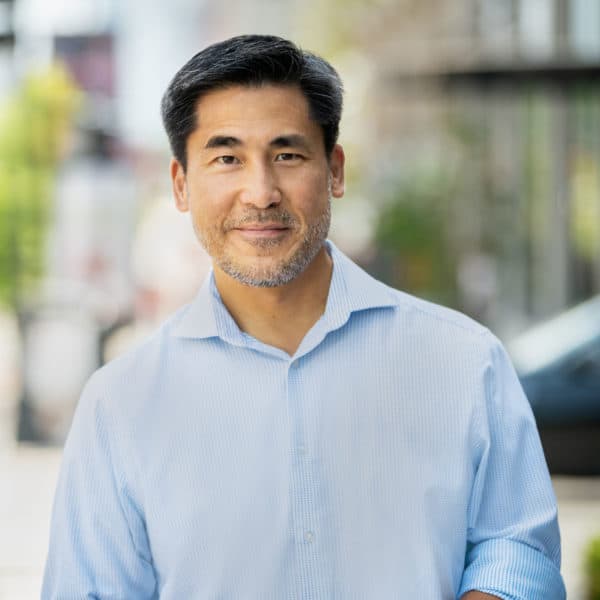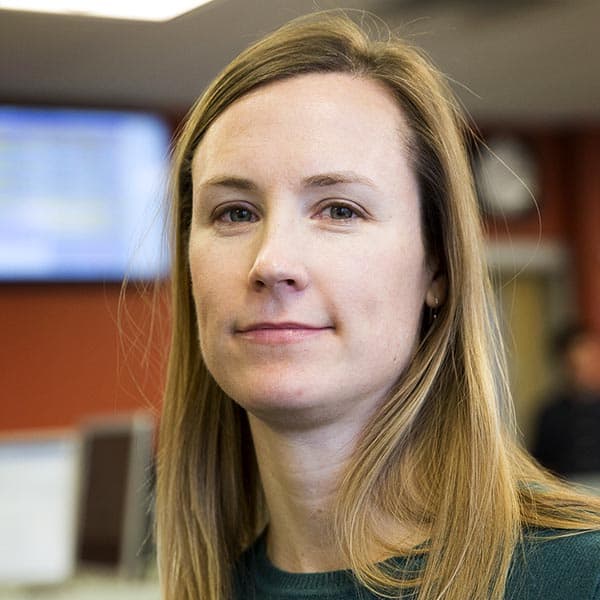Advertisement
'The Autumn Ghost' tells of innovation that saved lives during polio epidemic
Resume
When polio first broke out in the early 1900s, modern medicine couldn’t keep up. At the start, most patients didn’t make it home from the hospital.
The poliovirus often left patients paralyzed and with trouble breathing, and the only option for treatment was the iron lung, which sucked air into the lungs.
“The iron lung, which came in in 1928, was really revolutionary,” says critical care physician Dr. Hannah Wunsch. “In fact, it was the first time you had a machine that could support people's breathing.”
Though revolutionary, it still had a host of setbacks. Patients often felt trapped in a huge metal casket, a major downside to the iron lung. Plus, doctors and nurses had trouble treating patients because they had to stay encapsulated in the machine to create negative pressure that would suck air into the lungs. Additionally, for patients with bulbar polio, the mortality rate still hovered around 90% even when using the iron lung.
To address these shortcomings, Dr. Bjørn Aage Ibsen started working to create a positive pressure ventilator in 1953. The technology would effectively push air into the lungs. And, the technology was much smaller and less invasive than the iron lung. The mortality rate of the disease reduced from 90% to 20%.
“[Positive pressure] was used in the operating room by anesthesiologists when they gave someone anesthesia and paralyzed them for surgery,” Wunsch says. “For short periods of time, they would blow air into the lungs to keep someone breathing.”
Ventilator technology has been expanded since, but it remains similar to this day. And critical care, like that provided to polio patients, has become a focal point of medicine amid the COVID-19 pandemic.
Wunsch wrote the book “The Autumn Ghost: How the Battle Against a Polio Epidemic Revolutionized Modern Medical Care” detailing the creation of the ventilator and other aspects of critical care.
“Critical care medicine is something that really came to the forefront of people's attention in COVID-19, but it's always there in the background,” Wunsch says. “It's really the care we provide for the sickest patients in the hospital at any given time.”
Book excerpt: 'The Autumn Ghost: How the Battle Against a Polio Epidemic Revolutionized Modern Medical Care'
By Hannah Wunsch
Vivi Ebert was just twelve years old. She was going to die. Near the end of August, Vivi came home from school saying she had a head-ache and went to bed. The next day she complained that she couldn’t move her arms and legs well. On Tuesday, August 26, she had a fever, headache, stiff neck, and some paralysis: the telltale signs of polio. Her mother called an ambulance and Vivi was brought to the hospital; she already had weakness in one arm, but much more concerning, she also had difficulty breathing. Since early July, the hospital had admitted many patients just like Vivi, and almost all of them had died. As her symptoms worsened, the doctors and nurses knew she likely had only a few more hours, or days at most, to live.
The polio epidemic that year in Copenhagen had begun with a trickle of cases in July. By the end of the summer the disease was roaring through Denmark’s capital and outlying regions. It was far worse than in previous years, with more cases of paralysis and difficulty breathing than anyone had ever seen. There were daily news bulletins on the radio announcing the latest areas with outbreaks.
Ambulances kept pulling up at the hospital, hour after hour, day after day. By late August, there were fifty admissions a day, all with severe polio. The doctors and nurses would have focused on one key question: Could the patient take a breath? For someone who was struggling to breathe, there was little that could be done except to try to keep them comfortable.
Henry Cai Alexander Lassen, the chief of the Blegdam, the only infectious disease hospital in the city, was a physician and an expert on polio. He had cared for hundreds of patients with the illness. But this strain of the virus seemed to be causing more cases than usual, and was viciously deadly. By the time Vivi showed up, he and his team had already lost dozens of patients, many of them infants and children. Vivi was about to be next.
The previous decades had been full of major medical advances; antibiotics allowed for treatment of bacterial infections, the discovery of insulin meant that a diagnosis of diabetes was no longer a death sentence, and X-rays provided a way to “see” inside the body. New vaccines had even been developed for infectious diseases such as diphtheria and influenza. But in 1952 there was still little anyone could offer as treatment for patients with polio, and there was also no vaccine for prevention. Modern medicine was failing and polio was winning. That was about to change.
Adapted with permission of the publisher from the book "The Autumn Ghost: How the Battle Against a Polio Epidemic Revolutionized Modern Medical Care," written by Hannah Wunsch and published by Greystone Books in May 2023.
Julia Corcoran produced and edited this interview for broadcast with Peter O'Dowd. Grace Griffin adapted it for the web.
This segment aired on September 18, 2023.

